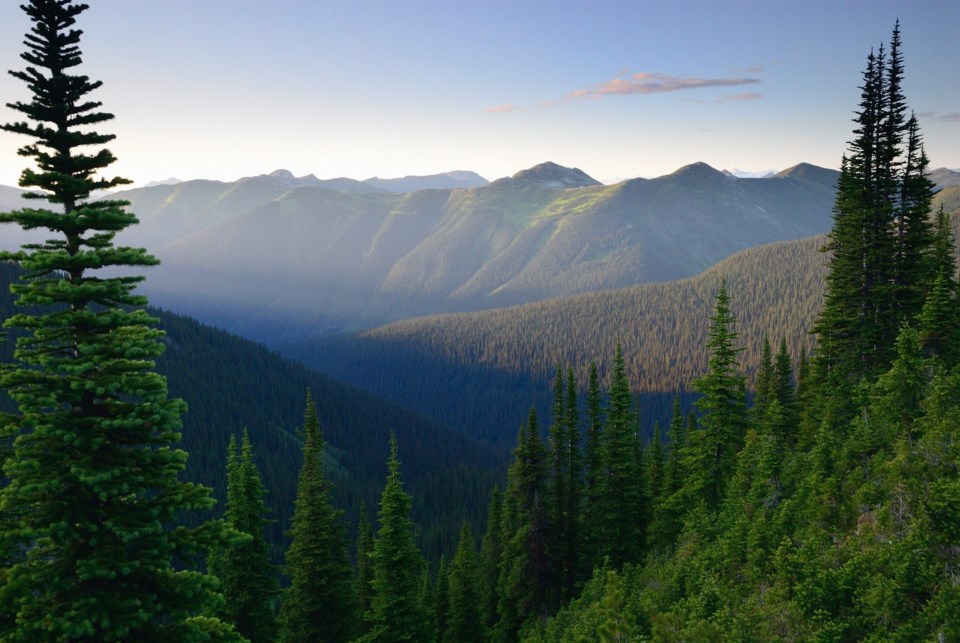One of the great mysteries in the local forest industry has got to be why BC Timber Sales would start auctioning off the Walker wilderness for clearcut logging while obstructing a shift to plantation thinning.
I went to a Conservation North event at Books and Company a couple weeks back on May 23 to watch their short film The Walker Valley.
Located between Prince George and McBride, this pristine complex of small valleys, which includes the Walker Creek, covers about 1,000 square kilometres and is tucked between the McGregor and Fraser River valleys. We watched stunning footage of untouched wilderness forests and mountain meadows.
What really struck me about the presentation was the importance of the Walker for threatened bull trout and endangered chinook salmon.
Many important bull trout and chinook salmon watersheds in the Upper Fraser have been impacted by clearcut logging, roads, pipelines and glyphosate spraying.
Bull trout in particular need exceptionally clear water for spawning and like the upper Goat, the Walker is one of the clearest, coldest, and purest watersheds left in the area.
Despite that, BC Timber Sales is in the process of auctioning off cutblocks of old-growth in the lower Walker to start moving the industrial clearcut plantation machine into the headwaters. If the history of logging around Prince George is any indicator, where the clearcuts happen, the helicopter glyphosate herbicides follow and we usually end up with lifeless even-aged monocrop plantations with next to no wildlife, nothing like the old growth mixtures we had before.
This is where it gets confusing.
Right now we have a growing stable of innovative logging operations, from Freya Logging to Integrated Operations, trying to turn the attention of the industry away from those pristine headwaters and towards the older previously cut plantations to start thinning them. Thinning the dense — typically pine —plantations can have dramatic improvements for biodiversity, fire resistance, and plantation function.
BC Timber Sales, instead of auctioning off old growth with a 7-8 hour haul in a place we should be protecting, could start auctioning off thinning in the plantations around town to set a market price for commercial thinning while keeping the pulp mills running and wildfire at bay.
But despite the fact Forests Minister Ravi Parmar has issued a directive to BC Timber Sales to start thinning, they aren’t doing it.
Your guess is as good as mine as to what goes on in the mind of the BC Ministry of Forests and their agencies like BC Timber Sales. But I think it’s a couple of things.
First off, the bureaucratic machine is locked into the old-growth primary forest harvesting paradigm and that’s a hard habit to kick. Thinning should theoretically involve little to no red tape, no surveys, no planting, no brushing needed, and bureaucracies don’t want to give up their red tape easily.
Secondly, I’ve heard from high levels in the ministry the belief that thinning is bad for wood quality.
The plan since around the 1970s was to clearcut, plant, eliminate the aspen and birch, and walk away for 60-80 years. Other than a few taxpayer funded passes with fertilizers to compensate for the elimination of the nutrient-providing deciduous, there would be minimal intervention otherwise.
Densely packed slow-growing northern conifer stands, so the argument goes, have tight growth rings and smaller branches on the lower part of the trunks, reducing taper and knot size. This theoretically protects our national brand of superior lumber and provides us with a marketing advantage over the twisty, fast growing southern yellow pine taking over the American softwood industry.
The reality is other than some specialty products, this argument is more about marketing and perception than reality.
Southern yellow pine is currently the same price as number 2 SPF. Studies show thinned pine increases stand value and has minimal if any reduction in lumber quality. Increased taper and knot size tends to be balanced out with lower rot and a higher lumber recovery factor, especially if thinning takes out the crooked trees for pulp.
And as someone who has worked in construction nobody building homes cares about the negligible differences in growth ring width or knot size other than the woodworker dweebs like myself.
Timber isn’t the only value anyway. The benefits of plantation thinning, especially if we leave residual aspen, birch, and douglas fir to increase diversity, can include more moose, more birds, more berries, more cattle grazing, and more drought resiliency.
If perceived timber quality reduction is the only reason BC Timber Sales reckons we need to log the Walker instead of thinning the plantations, I’m not buying it.
We can keep the industry going by shifting gears and fixing the mess we already made, like they do in Germany and Sweden. Let’s lay off the old growth rainforests and the disappearing douglas fir stands and start thinning the pine.
If thinning plantations is a viable alternative for the industry, the only reason we will log the Walker will be bureaucratic ineptitude and stagnation.
James Steidle is a Prince George writer.



